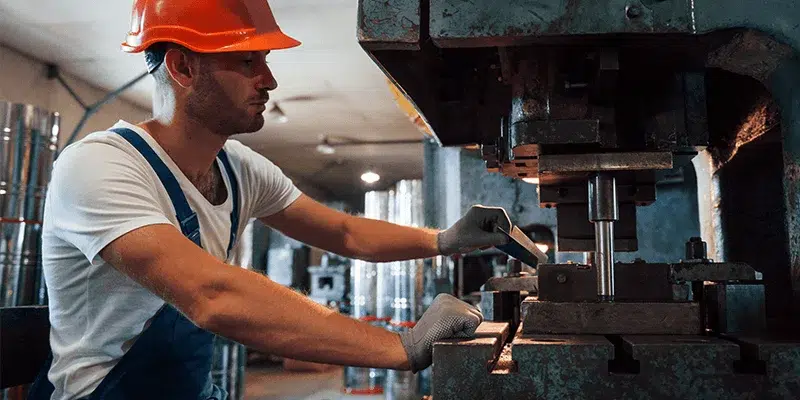The Art of Precision: Exploring the Benefits of Vacuum Casting
In the world of manufacturing and prototyping, precision and accuracy play a crucial role in determining the success of a project. One method that has gained popularity for its ability to deliver high-quality, precise results is vacuum casting. This advanced casting technique offers a wide range of benefits that make it a preferred choice for many industries. In this article, we will explore the art of precision through vacuum casting and delve into the various advantages it offers.
What is Vacuum Casting?
Vacuum casting, also known as silicone molding, is a manufacturing process that involves creating a master pattern, typically made from a 3D-printed model or a machined prototype, and using it to make silicone molds. These molds are then filled with liquid polyurethane or other casting materials under vacuum pressure to produce highly detailed and accurate replicas of the original pattern. This technique is widely used for producing small to medium batch production runs of parts with intricate geometries and fine details.
The Process of Vacuum Casting
The vacuum casting process involves several key steps:
- Creating a master pattern: A 3D-printed or machined master pattern is designed based on the desired part geometry.
- Making a silicone mold: The master pattern is placed in a mold box, and liquid silicone is poured over it to create a mold.
- Vacuum degassing: The mold is then placed in a vacuum chamber to remove any air bubbles and ensure uniform mold thickness.
- Casting the part: Once the mold is ready, it is filled with the casting material, which is then cured and solidified.
- Demolding: The cured part is removed from the mold, trimmed, and finished to meet the desired specifications.
The Benefits of Vacuum Casting
Vacuum casting offers a variety of benefits that make it a popular choice for rapid prototyping and low-volume production. Some of the key advantages of vacuum casting include:
Precision and Accuracy
- Ability to replicate intricate details: Vacuum casting can reproduce complex geometries, fine surface textures, and sharp edges with high precision.
- Tight tolerances: Parts produced through vacuum casting exhibit excellent dimensional accuracy, making them suitable for functional testing and end-use applications.
Cost-Effective Production
- Lower tooling costs: Vacuum casting does not require expensive molds or tooling, making it an economical option for small production runs.
- Reduced lead times: The quick mold turnaround time and shorter production cycles of vacuum casting help in accelerating product development and time-to-market.
Material Variety
- Wide range of materials: Vacuum casting supports the use of various casting resins, including ABS-like, polypropylene, and rubber-like materials, allowing for flexibility in material selection.
- Material properties customization: Different material formulations can be used to achieve specific mechanical, thermal, or aesthetic properties in the final parts.
Quality Control
- Consistency in part quality: Vacuum casting ensures uniformity in part production, reducing variations and defects across multiple parts.
- Post-processing capabilities: Finished parts from vacuum casting can undergo additional treatments such as painting, plating, or texturing to meet the desired finish requirements.
Applications of Vacuum Casting
Vacuum casting finds applications across various industries and is particularly well-suited for prototyping, product development, and low-volume manufacturing. Some common uses of vacuum casting include:
Prototype Development
- Rapid prototyping: Vacuum casting allows for quick iteration and testing of design concepts before moving to mass production.
- Functional prototyping: Parts produced through vacuum casting are functional prototypes that closely resemble the final product in terms of form and function.
Product Testing
- Performance evaluation: Vacuum-cast parts can be used for functional testing, durability testing, and validation of product designs under real-world conditions.
- Iterative design improvements: Feedback from testing can be incorporated into the design to refine the product features and enhance performance.
Low-Volume Production
- Small batch runs: Vacuum casting is ideal for producing limited quantities of parts for niche markets, custom applications, or early-stage production.
- Bridge to mass production: Vacuum-cast parts can serve as a bridge between prototyping and full-scale manufacturing, allowing for market testing and validation.
Conclusion
As we have explored, vacuum casting is a versatile and efficient manufacturing process that offers a wide range of benefits, from precision and accuracy to cost-effective production and quality control. Whether you are a product designer, engineer, or manufacturer, vacuum casting can help bring your ideas to life with high-quality prototypes and production parts. By leveraging the art of precision through vacuum casting, you can accelerate your product development process, reduce time-to-market, and achieve optimal results for your projects.

What do you think?
Show comments / Leave a comment